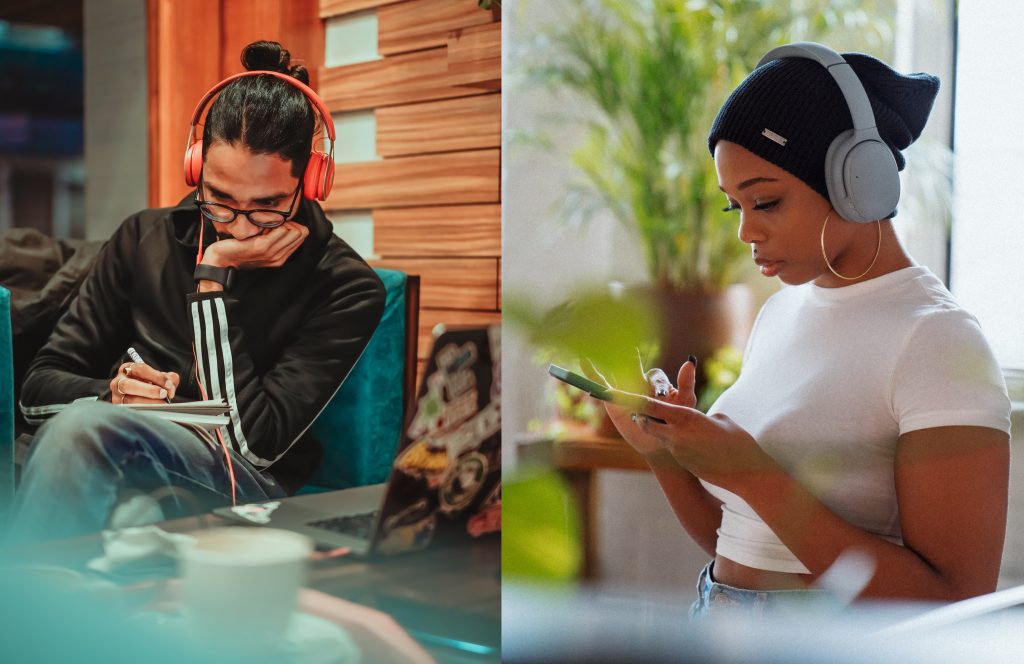
These guidelines have been created to provide general advice to our Content Creators. Of course many of you will be experienced communicators, teachers, broadcasters and podcasters and indeed we encourage different and distinct styles and formats of content. The key things are to provide audios of the appropriate value and duration to which users may listen and re-listen; and to encourage users to seek out further content or to reach out to your other services or digital channels.
What do you need to send to us?
For each audio we require the following:
- Title – n characters
- Small graphic (for listings) n x n – this may relate to the session or to your brand
- Large graphic (for the play screen) n x n – this may relate to the session or to your brand or it can be whatever you like.
- Audio description (up to 400 characters): Why should they listen – what is the problem/need? What will listeners take away? Credibility of the content (research, success stories, popularity).
(We will display this above your “creator description” text – see below – which should establish your authority and also list links to your digital channels and contact details.)
Have you ever wanted to amp-up your engine? This audio will change the way that you think about car maintenance. It will reveal the seven secrets of tuning. You will become super confident and able to overcome most common car maintenance problems. It is part of the XYZ self-improvement series that has helped more than 100, 000 people.
- The MP3 file – typically 12 to 20 minutes – at 112kbit per sec, mono, -19LUFS. (See audio guidelines below – be sure to contact us if you need help with recording or post-production)
- A sample/trailer audio (MP3 – 30 seconds) – this can be either:
- An audio to set out the topic or goal – or to pose a question: Have you wondered…? Do you notice…? Would you like to…? Introduce yourself and establish authority; Tell listeners what they will gain from the audio
- A sample from the audio itself.
- Do you want this audio to be given free to people who use your referral code – so that you can say “Use this referral code and receive a free audio from me about xyz”.
- If this is your first Audio then we will need agree your Creator Name and Creator ID… and you will need to send your “Creator Description” (up to 400 characters – contact us if you need more space) – this should establish your authority, list links to your digital channels and provide contact details. Write it in the first person:
About Simon:
I am an experienced mechanic. I trained here and there. I can help you to be better. Read my book “Getting it Right in the Workshop” (amazonlink) or find out about my training academy at www.cjhchkhc.com or IG @skjhdss; or join my online club at www.djhkjs.club. My podcast is “skjhskjfhfhshh” available at all good podcast places. contatc@sjsjh.djj
Content:
Content will be of more value to users if it is designed to be listened-to a number of times over.
Aim for about 15 minutes (12 to 20); if necessary break it into different sessions for different topics – or part one and part two.
You should refer to the audio as “this audio” or “this session”.
If you’re not sure about the structure of the content then we suggest as follows (but feel free to use any template or format you like – these bullets are just guidelines and may not be relevant to your subject or style):
- Start by setting out the topic or goal of the audio – or pose a question: Have you wondered…? Do you notice…? Would you like to…?
- Introduce yourself and establish authority
- Tell them what they will gain from the audio
- If you are dealing with problem or challenge then it may be useful to: normalise feelings (people often say they feel this… when…; many of us find that we…; you’re not alone…; this is very common…)
- Encourage listeners to believe there is a solution.
- Detail: What is the background to this? What is the detail? What do people need to know or be aware of?
- What thoughts should they hold on to – convictions, affirmations, encouragement, mantras – what have you learnt or what are your beliefs?
- What do they need to do (to change, to believe, to say).
- What will progress look like?
- Summarise – key learning points, affirmations or mantras
- Finish with a thought – a positive message.
- After a pause, at the end of the session you should take 20 to 60 seconds to invite listeners to check-out your other audio sessions on Elloro AND your digital channels.
EG say: if you have found this audio useful/helpful then you can they can find more from my book(s), podcasts, website or club/academy, training, consultations etc – pitch the benefits – the details are in the description text of this audio. (NB: ensure that these details are in your description text).
Please use any stings or music that will brand your content or maintain consistency with your other content. Where content is meditative or affirming then audios should include background music – see below.
Content should avoid profanities, intolerance and insults particularly against any nationalities, race, religion, gender, sexual orientation or those with disabilities or special needs. Elloro reserves the right to remove any offensive content.
Audio standards:
- Professional recording quality – minimum kit: a good USB mic, PC recording, editing and mixing software (…if you don’t have software then try Audacity here which is free or Mixpad here).
Record in an acoustically “dead” booth or room (curtains acoustic screens). Reduce background noise from computers and record at a quiet time of day or night.
Edit your file and add any stings or music using your PC editing software. (See first video below.)
Consider using Auphonic (auphonic.com) which is free to clean up and adjust the levels of the audio before sending to us. (See instructions and second video below.)
Save file as MP3 (112kbs, mono, -19LUFS).
- As a minimum you can use a phone or PC mic and standard apps (e.g. Windows voice recorder or Android voice recorder – set to hi quality) in an acoustically “dead” room (curtains or acoustic screens). If you do use a phone, then place it flat on a pile of books – 8 inches from one shoulder).
You will need to use audio editing software – such as Audacity here which is free or Mixpad here.
We suggest that you use Auphonic (auphonic.com), which is free, to clean up and adjust the levels of the audio before sending to us. (See instructions and second video below.)
Save file as MP3 (112kbs, mono, -19LUFS).
If you make a slip when recording just start the paragraph over – and it can be edited out.
Auphonic settings:
Auphonic will upload your edited audio file, clean it up and then allow you to download the processed file. It’s free!
Select your file for upload.
Don’t use Auphonic to add any intro or outro.
Leave blank: artist, album track, extended meta data, chapter marks.
Specify the output file as MP3, 112kbs, MONO,
No speech recognition or publishing/external services required.
Check the boxes for Adaptive Leveller, Loudness, Normalization and Filtering.
Check the box for Noise Reduction if you have any background noise (hum or hiss) – if so, set reduction amount to “auto”.
Set loudness target to -19 LUFS
Submission to Elloro:
Email or Wetransfer – email content@elloro.app
Please email any questions your might have.
Useful Resourses:
